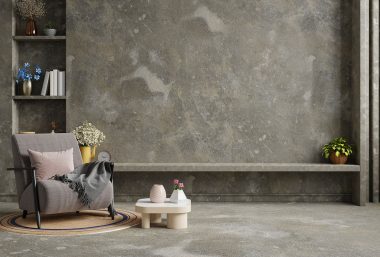What Is Vitruvian Architecture? Ancient Design Rules That Still Work Today
Updated Thu, Oct 16, 2025 - 13 min read
Top blog articles
Ever wondered why some homes just feel right while others don’t? The secret might be over 2,000 years old.
If you’re planning a home renovation, building a custom home, or working with contractors, understanding Vitruvian architecture can save you thousands of dollars and years of regret. These ancient Roman principles (strength, functionality, and beauty) are the foundation of homes that last, work efficiently, and make you happy every single day.
Don’t worry if you’ve never heard of Vitruvius before. By the end of this guide, you’ll understand exactly how these timeless principles apply to your kitchen remodel, bathroom renovation, or new construction project, and why contractors who follow them deliver better results.
What is Vitruvian architecture?
Vitruvian architecture refers to the design principles established by Marcus Vitruvius Pollio, a Roman architect and engineer who lived around 80-15 BCE. His groundbreaking work, “De Architectura” (The Ten Books on Architecture), laid out three essential qualities that every building must have:
- Firmitas (Structural Strength) – Buildings must be solid and durable
- Utilitas (Functional Design) – Spaces must serve their purpose efficiently
- Venustas (Beauty) – Buildings should inspire and delight
Think of it this way: A house that’s structurally sound but ugly won’t make you happy. A beautiful house that doesn’t function well will drive you crazy. And a functional, pretty house that falls apart in five years is a nightmare. Vitruvian architecture is about getting all three right.
These principles have guided architects for over two millennia, from Renaissance masters like Leonardo da Vinci (who created the famous Vitruvian Man drawing) to modern home designers today.
Why Vitruvian principles matter for your home project
If you’re spending $30,000 on a kitchen remodel or $50,000 on a home addition, you want it done right. Homes built on Vitruvian principles consistently outperform others in three critical ways:
Market Value: According to the National Association of Realtors, homes with superior construction quality and functional design command premium pricing and sell faster.
Owner Satisfaction: Well-designed spaces that balance function and beauty make daily life easier and more enjoyable.
Long-Term Durability: Quality construction using Vitruvian principles means fewer repairs, lower maintenance costs, and longer building life.
Simply put: These principles help you avoid expensive mistakes and create a home you’ll love for decades.
The three pillars of Vitruvian architecture explained
As contemporary architect Gordon Shackell explains in his analysis of the three principles, these aren’t just abstract concepts (they’re practical guidelines that distinguish good architecture from great architecture. Let’s break down what each principle means for your home), with real examples you can use today.
Firmitas: Structural strength and durability
What it means: Your home must withstand weather, time, and daily use without compromising safety or requiring constant repairs.
Modern applications for homeowners:
- Foundation systems designed for your local soil and climate
- Structural framing that meets or exceeds building codes
- Weather-resistant materials like fiber cement siding and metal roofing
- Quality systems (HVAC, electrical, plumbing) with extended warranties
Real-world examples:
When you’re gutting a bathroom, firmitas means using waterproof construction techniques, proper ventilation to prevent mold, and quality plumbing that won’t fail. A cheap bathroom remodel might look good initially, but if the waterproofing fails, you’ll be ripping it out again in a few years.
For kitchen renovations, it means structural support for heavy countertops and islands, commercial-grade appliances built for daily use, and cabinets constructed with solid wood or plywood (not particle board that crumbles when wet).
Questions to ask your contractor:
- “How will this design handle our local weather conditions?”
- “What’s the expected lifespan of these materials in our climate?”
- “How does this compare to alternatives for long-term performance?”
Utilitas: Functional design and efficiency
What it means: Every space must serve its intended purpose efficiently and make your daily life easier.
Modern applications for homeowners:
- Smart layouts that support how you actually live
- Built-in storage solutions (not afterthought furniture)
- Energy efficiency that lowers utility bills
- Accessibility features for aging in place
Real-world examples:
A kitchen designed with utilitas in mind has the famous “work triangle” layout, placing sink, stove, and refrigerator within easy reach of each other. It has counter space where you actually prep food, storage where you need it, and outlets where you’ll use appliances.
Bad utilitas? A kitchen with beautiful cabinets that are too deep to reach anything, or a bathroom where you can’t open the door when someone’s at the sink. Pretty, but frustrating every single day.
Questions to ask your designer:
- “How does this layout support our family’s daily routines?”
- “Where will we store [specific items we use]?”
- “How will this space adapt as our needs change?”
Venustas: Beauty and aesthetic appeal
What it means: Your home should make you happy. It should look good, feel welcoming, and be a place you’re proud to live in.
Vitruvius emphasized proportion, symmetry, and harmony as essential to creating aesthetically pleasing spaces, concepts that remain fundamental to architectural design today.
Modern applications for homeowners:
- Proper proportions between rooms and architectural elements
- Material harmony that creates visual cohesion
- Natural light maximized through thoughtful window placement
- Quality details like trim work and built-ins
Real-world examples:
Venustas is why a 9-foot ceiling feels more comfortable than an 8-foot ceiling in a large room, it’s about proportion. It’s coordinating your kitchen finishes so cabinets, countertops, and flooring work together instead of competing. It’s placing windows to frame views and bring in morning light where you drink your coffee.
Bad venustas? Mismatched styles, cramped proportions, or renovation work that looks like an obvious add-on rather than part of the original house.
Questions to ask your architect:
- “How do these proportions create visual harmony?”
- “What materials work together to enhance the overall design?”
- “How does this relate to our home’s existing architecture?”
Understanding Vitruvian proportions in home design
One of Vitruvius’ most influential contributions was his system of proportional design based on the human body. As detailed in this comprehensive guide to the Vitruvian module, these proportional systems weren’t just aesthetic choices; they created spaces that felt naturally comfortable because they related to the human scale.
How this applies to your home:
- Ceiling heights: 8-foot ceilings work in bedrooms, but living rooms feel better with 9-10 feet
- Doorway widths: Standard 32-36 inches feels right because it relates to human shoulder width
- Counter heights: Kitchen counters at 36 inches match the average work height
- Window placement: Sill heights around 30 inches let you see out while seated
Modern architect Le Corbusier later adapted these principles into his “Modulor Man” system, proving that Vitruvian proportional thinking remains relevant in contemporary design.
How Vitruvian principles apply to common home projects
Let’s get specific about how these ancient rules improve modern renovations.
Kitchen renovations through the Vitruvian lens
Firmitas (Strength):
- Structural modifications for open floor plans or large islands
- Quality cabinetry with solid construction
- Durable countertops (quartz, granite, natural stone)
- Commercial-grade appliances built for heavy use
Utilitas (Function):
- Efficient work triangle for cooking
- Adequate storage for all your dishes and cookware
- Proper task lighting over prep areas
- Ventilation that actually removes cooking odors
Venustas (Beauty):
- Cohesive material palette throughout
- Proportional relationships between island size and room size
- Natural light from windows or skylights
- Quality finishes you’ll love looking at daily
Average kitchen renovation costs range from $100-$250 per square foot, but following Vitruvian principles ensures your investment pays off in function and enjoyment, not just aesthetics.
Read more: Complete kitchen remodeling guide
Bathroom remodeling with classical principles
Firmitas (Strength):
- Waterproof construction from floor to ceiling
- Structural support for soaking tubs
- Quality plumbing with access panels
- Exhaust fans that prevent moisture damage
Utilitas (Function):
- Logical fixture placement for morning routines
- Storage for toiletries without cluttering counters
- Accessibility features (grab bars, curbless showers)
- Privacy solutions for shared bathrooms
Venustas (Beauty):
- Spa-like atmosphere with quality materials
- Natural light that makes the space feel larger
- Coordinated finishes throughout
- Details that create a relaxing environment
The average bathroom remodel costs $10,000-$25,000. Applying Vitruvian principles ensures you create a space that’s not just pretty, but actually works better than your old bathroom.
Home additions guided by Vitruvian principles
When adding square footage to your home, these principles are crucial:
Integration with existing structure:
- Structural connections that maintain building integrity
- Architectural style that matches (or intentionally complements)
- Roof lines and materials that look cohesive
- Floor levels and ceiling heights that work with existing spaces
Functional relationships:
- New spaces enhance rather than disrupt existing flow
- Systems (HVAC, plumbing, electrical) properly sized
- Natural light throughout the addition
- Circulation patterns that make sense
A poorly planned addition looks tacked-on and feels awkward. One following Vitruvian principles feels like it was always there.
Using Vitruvian principles to evaluate contractors
These principles give you a framework for choosing the right contractor and avoiding expensive mistakes.
Questions to ask potential contractors
About Firmitas (Structural Integrity):
- “How will you ensure this meets current building codes?”
- “What structural modifications are required?”
- “What materials do you recommend for our climate?”
- “How do you handle moisture control and weatherproofing?”
About Utilitas (Functional Performance):
- “How does this design improve our space’s functionality?”
- “What storage solutions are included?”
- “How will this affect our daily routines?”
- “What maintenance will these materials require?”
About Venustas (Aesthetic Quality):
- “How does this complement our home’s architecture?”
- “What finish options balance durability and beauty?”
- “What details distinguish quality work from basic construction?”
- “Can you show examples of similar projects?”
Red flags that indicate a contractor doesn’t understand these principles
- Focuses only on cost, ignoring function and durability
- Suggests materials based solely on appearance
- Doesn’t ask about how you’ll use the space
- Can’t explain structural implications of design changes
- Pushes trendy designs that don’t fit your home’s style
Good contractors understand all three principles and discuss them naturally, even if they don’t use Vitruvius’ Latin terms.
What Vitruvian architecture costs (and what it saves)
Following these principles doesn’t necessarily cost more upfront, but it definitely saves money long-term.
Upfront considerations
Quality materials: May cost 10-20% more than budget options.
Professional design: Architect or designer fees (3-10% of project cost).
Proper planning: Time spent getting it right before construction starts
Example: A $50,000 kitchen remodel following Vitruvian principles might cost $52,000-$55,000 instead, but it will last twice as long and function far better.
Long-term savings
Reduced maintenance: Quality construction = fewer repairs
Energy efficiency: Functional design = lower utility bills (save $200-$500 annually)
Higher resale value: Well-designed homes sell for 5-15% more
Fewer do-overs: Getting it right the first time avoids costly renovations
Example: That same $55,000 kitchen will add $60,000-$70,000 to your home’s value, while a poorly designed $45,000 kitchen might add only $35,000.
Use our free cost estimator tool to see how quality improvements affect your home’s value.
Modern examples of Vitruvian principles in action
These ancient principles work perfectly with modern technology and sustainable design.
Sustainable design and Vitruvian architecture
Firmitas in sustainability:
- LEED-certified construction using durable, low-impact materials
- Passive house design for energy performance
- Quality construction that lasts 100+ years
Utilitas in green building:
- Energy-efficient systems that reduce bills
- Water conservation features (low-flow fixtures, rainwater harvesting)
- Healthy indoor air quality
- Flexible spaces that adapt without major renovation
Venustas in sustainable architecture:
- Natural materials that age beautifully
- Abundant daylighting that reduces energy use
- Beautiful landscape integration
- Regional design reflecting local climate and culture
Smart home technology through the Vitruvian lens
Firmitas: Robust infrastructure for technology integration, quality components with long service life
Utilitas: Intuitive controls that simplify daily routines, energy management systems, and integrated security
Venustas: Concealed technology that doesn’t compete with architectural beauty, elegant lighting control systems
Common mistakes that violate Vitruvian principles
Even with 2,000 years of architectural wisdom available, these mistakes still happen regularly:
Prioritizing beauty over function: Gorgeous spaces that don’t work
Choosing cheap materials: Pretty finishes that fall apart quickly
Ignoring proportions: Rooms that feel awkward or uncomfortable
Following trends blindly: Designs that look dated in 5 years
Skipping structural assessment: Pretty renovations hiding serious problems
The biggest mistake? Thinking you have to choose between strength, function, and beauty. Vitruvian principles show that great design requires all three.
Resources for applying Vitruvian principles to your project
Professional organizations
- American Institute of Architects (AIA) – Find qualified architects
- National Association of Home Builders (NAHB) – Construction best practices
- International Code Council (ICC) – Building code resources
- Institute of Classical Architecture & Art – Traditional design education
Planning tools
- Kukun Cost Estimator – Calculate renovation costs and ROI
- Find qualified contractors near you
- Building department websites for code requirements
FAQs about Vitruvian architecture
Do I need to study Roman architecture to apply these principles?
No! The principles are simple: build it strong, make it work well, and make it beautiful. Any good contractor or architect understands these concepts, even if they’ve never heard of Vitruvius.
Is Vitruvian architecture more expensive?
Not necessarily. Following these principles is about smart decisions, choosing materials that last, designing functional layouts, and creating proportional spaces. Poor planning and cheap shortcuts cost more in the long run.
Can modern homes follow Vitruvian principles?
Absolutely! These principles work with any architectural style, modern, traditional, contemporary, or anything in between. They’re about fundamental quality, not specific aesthetics.
How do I know if my contractor understands these principles?
Listen to how they talk about your project. Do they discuss structural integrity, functional layout, AND visual appeal? Or do they focus only on one aspect? Quality contractors naturally consider all three.
What’s the most common Vitruvian principle homeowners ignore?
Utilitas (function). Many people get so focused on how things look that they forget to ask “Will this actually work for how we live?” Beautiful kitchens with zero counter space or bathrooms with impractical layouts are common results.
Last thoughts on Vitruvian architecture for your home
Over 2,000 years ago, Vitruvius figured out what makes buildings great: they need to be strong, functional, and beautiful. If you’re missing any one of these three elements, your renovation or construction project won’t deliver the results you want.
Whether you’re planning a $10,000 bathroom remodel or a $200,000 home addition, these principles guide decisions that create lasting value, daily satisfaction, and homes you’ll love for decades.
The good news? You don’t need to be an architecture scholar to apply these principles. Work with contractors and designers who understand that quality means more than just aesthetics. Ask questions about structure, function, and beauty. Use these principles to evaluate proposals and make decisions.
Your home is likely your largest investment. Following Vitruvian principles ensures that investment pays off in ways that matter, a safer structure, more efficient spaces, and a beautiful home you’re proud to live in every single day.
Ready to start your next home project? Use our free cost estimator to understand your investment, then find contractors who understand that great design balances strength, function, and beauty.
Need contractors who understand quality design? Our network connects you with licensed professionals who combine classical design principles with modern construction techniques. Get recommendations here.
Your opinion matters. Leave a comment









